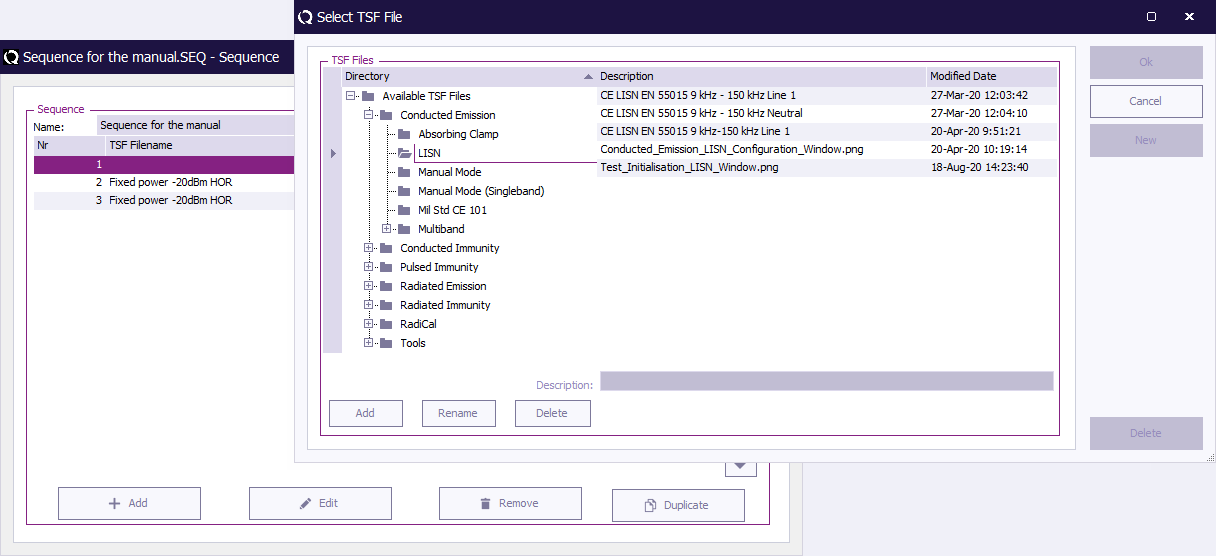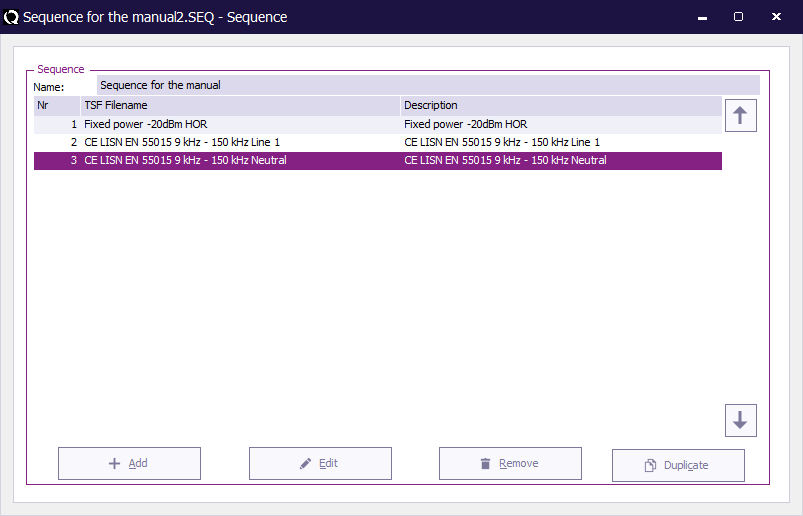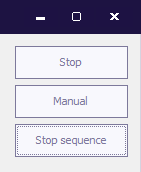Chapter 11: Difference between revisions
(→Goal) |
(→Goal) |
||
| Line 11: | Line 11: | ||
{{Warning|Sequence testing allows unattended testing. However some tests can cause dangerous situations. Please be especially aware with immunity testing!}} | {{Warning|Sequence testing allows unattended testing. However some tests can cause dangerous situations. Please be especially aware with immunity testing!}} | ||
Especially in combination with the [[#Pause]] test, sequence testing can be very attractive to easily automate a fixed combination of tests. | Especially in combination with the [[#Pause|Pause]] test, sequence testing can be very attractive to easily automate a fixed combination of tests. | ||
== Creating and saving a sequence == | == Creating and saving a sequence == | ||
Revision as of 13:13, 29 December 2008
Sequence Testing[edit]
Goal[edit]
The goal of sequence testing is to run different (type of) tests after each other, without the intervention of a test engineer. These tests can be of the same type or of completely different types.
The sequence testing functionality can for example be used to:
- Run a radiated emission test, a conducted emission test and a radiated immunity test (all performed in the same anechoic chamber) after each other.
- Another example is the situation where different amplifiers are used for different frequency bands. For this situation, multiple TSF files can be generated where each TSF file defines one of the frequency bands. All the created TSF files, can then be placed in a sequence so they can be run like one test. The same is true for antenna polarisation, where a horizontal and a vertical TSF file can be created and be put into a single sequence.
- three (or more) different conducted emission frequency bands can be added to a sequence file, and be tested sequentially after each other.
| Warning: | Sequence testing allows unattended testing. However some tests can cause dangerous situations. Please be especially aware with immunity testing! |
Especially in combination with the Pause test, sequence testing can be very attractive to easily automate a fixed combination of tests.
Creating and saving a sequence[edit]
From the main menu, select:
-
 File
File
-
 New
New
-
 Sequence
Sequence
-
-
-
A new sequence file will be created. To add a test to a sequence, open the test configuration menu for the desired test, and select the desired TSF file.
This sequence file can be saved through the pull down menu:
-
 File
File
-
 Save as
Save as
-
-
EXAMPLE 1:
Select:
-
 File
File
-
 New
New
-
 Sequence
Sequence
-
-
-
Enter a description for this sequence file
-
 Tests
Tests
-
 Radiated immunity
Radiated immunity
-
 Substitution
Substitution
-
-
-
select the desired TSF file from the list.
The TSF file will now be added in the sequence window as shown the picture below.
To save the sequence file, select:
-
 File
File
-
 Save sequence as...
Save sequence as...
-
-
Check if the correct sequence name is mentioned.
Adding a test to a sequence[edit]
When a sequence file has to be modified, the file can be opened from the menu:
-
 File
File
-
 Open
Open
-
 Sequence...
Sequence...
-
-
-
The list of current TSF files in the sequence will be displayed.
To add a new test to a sequence, select the desired test from the Tests, pull down menu.
A list of the available TSF files for this test method will be shown. Select the desired TSF file by double clicking on it.
The TSF file will be added to the sequence file.
| Note: | A copy of the selected TSF file will be added to the sequence. This means that if the original TSF file is changed afterwards, the copied TSF that is present in the sequence, will still use the original test parameters.
If the changed TSF file should also be updated in the sequence, the corresponding TSF file has to be removed from the sequence, and the changed TSF file has to be added again to the sequence. |
Changing a test in a sequence[edit]
The configuration of a TSF that is already included in a sequence, can be changed by selecting the test in the sequence and pressing the Edit button.
The TSF window of the selected test will be shown, and it is possible to change any parameter. When all the required parameters are changed, pressing the Store button will update the configuration of the TSF file in the Sequence, and the TSF window will be closed.
Removing a test from a sequence[edit]
On the other hand, TSF files can be deleted from the sequence list, by selecting the test in the sequence and pressing the delete button.
Changing the order of the tests[edit]
The order off the tests in the sequence can be changed by selecting the desired test and click the up or down arrow in order to promote or demote this specific test.
Stopping test in sequence[edit]
There are two ways of stopping a test in a sequence. The first one is only stopping the current running test. The second one is stopping the complete sequence, including the current running test. To end the current test press stop, to end the current test and sequence press stop sequence. The stop sequence button will appear only when running a test in sequence mode.


